Starichkov Island
Starichkov Island is an island in the southern part of Avacha Bay. As many as 44 nesting colonies of 11 species of seabirds have been recorded on the island. A real bird bazaar.
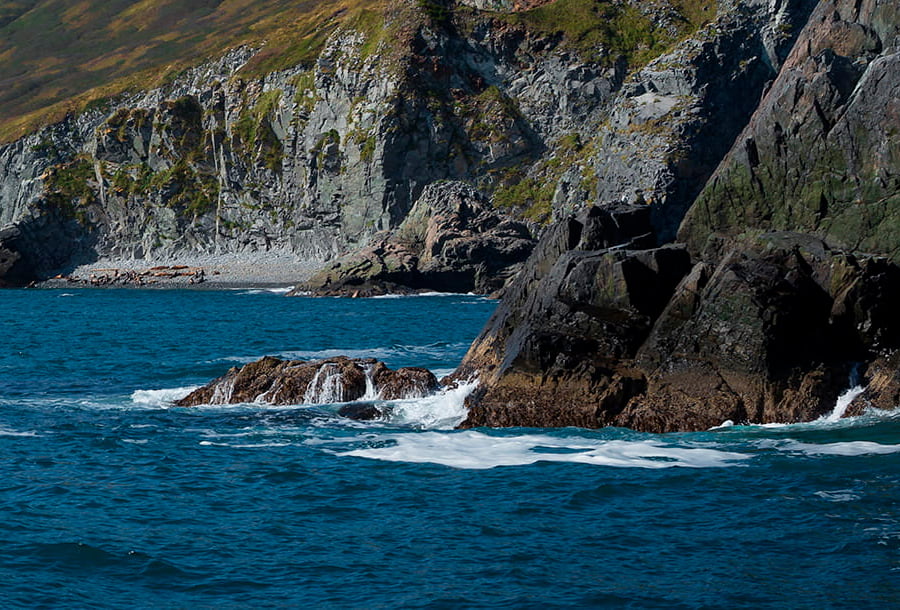
The marine world of Kamchatka is fabulously rich and amazingly diverse. The sea creatures are often not afraid of humans, and in most places they are protected by nature reserves.
About KamchatkaTo book a tour or get advice about traveling to Kamchatka, write us through this form. A manager Anastasia will reply to your request shortly.
Anastasia

The Kamchatka Peninsula is surrounded by water on three sides. The western shores are washed by the Sea of Okhotsk, the eastern shores by the Bering Sea and the Pacific Ocean. Due to this location on the planet, Kamchatka's marine life is very rich: from small plankton to a huge whale of 50 tonnes; from day trips along the coast to international shipping and economic fishing.
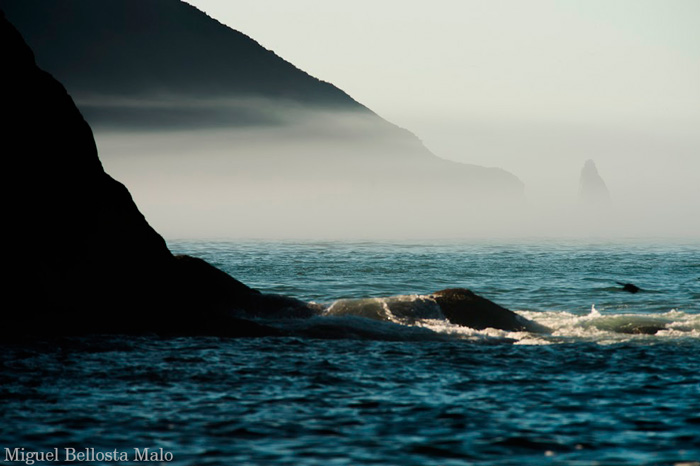
Kamchatka's shores are heavily indented with bays and coves. The eastern coast of the peninsula is particularly notable for the number of the latter. The most beautiful and the most important here is Avacha Bay, the port centre of the entire Kamchatka Peninsula. Avacha Bay is a round-shaped bay connected to the Pacific Ocean by a small strait. Its coasts curve and contain even smaller bays: Stanitsky, Tikhaya, Bezymyannaya, Srednaya and Bolshaya Lagernaya. The shores of the bay are of volcanic origin, and the relief has a mountainous character. The maximum depth is 28 metres. The shallow waters are represented by stony placers and coarse clastic material. The dominant underwater inhabitants are sea urchins. This is followed by actinia, sponges and ascidia. Occasionally there are concentrations of starfish and crab. Here, underwater, there are also thickets of brown algae. The permanent number of fish in the bay reaches 32 species. Fishing with nets for salmon is widespread here. Permanent marine inhabitants are flounder, terpug, goby, sea bass and halibut. All Kamchatka seafood has a distinctive flavour and contains biologically active substances. The frequent consumption of shrimps, crabs and caviar is not surprising for Kamchatians.
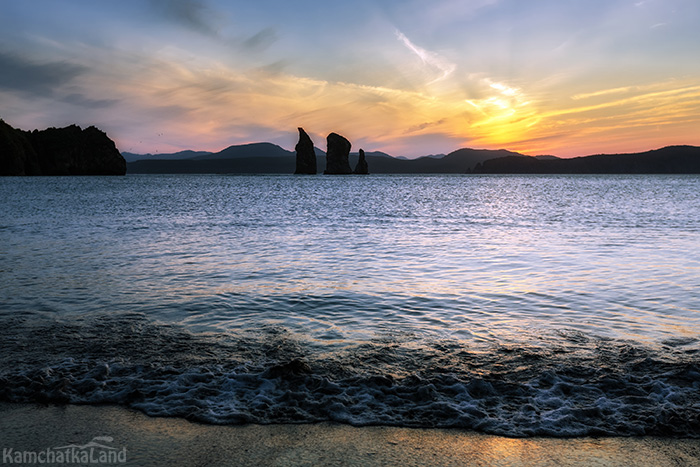
Fish are an integral part of the region's marine life. The Sea of Okhotsk has about 270 species and the Bering Sea has 390 species. The Pacific Ocean is many times more extensive in terms of species and is therefore a paradise for fishermen. Cod, salmon, char, perch, herring, etc. are found here. Fish in Kamchatka is the main product of fishing, and fishing is an integral type of tourism. Due to the large water area of this peninsula, there are a lot of fish here. The most common family is salmon. As a rule, this species dies immediately after spawning, giving life to a new generation. In Kamchatka, its water bodies contain such inhabitants as: chavicha, coho salmon, salmon, trout, chum salmon, pink salmon, nerka, kundzha and grayling.
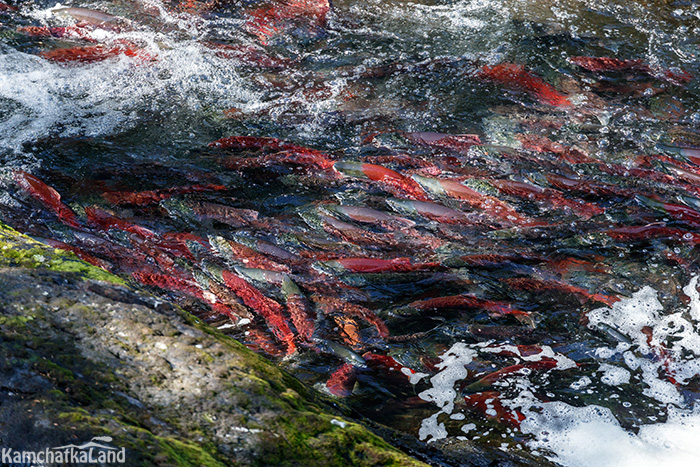
Pinnipeds are indispensable inhabitants of the region's water area. Walruses are the largest representatives of this genus. The weight of an adult can reach 1.5 tonnes, and their tusks are like tusks. Among walruses, the topic of helping drowning brethren and children is topical. The latter stay with their mother for 7 years, after which they are expelled by older males. Walruses feed mainly on molluscs, but can also eat crayfish, worms, echinoderms and fish. Permanent rookeries established by walruses in summer are mainly located on the western coast of the peninsula, as well as on Karaginsky Island. The main danger to walrus life at a rookery is panic. They may be frightened by the rumble of an aeroplane, and during numerous migrations from the rookery to the water they may simply run each other over with their bodies.
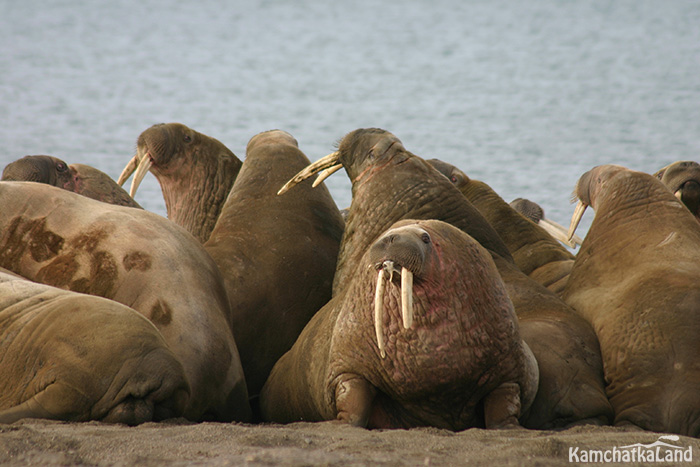
Another of the famous pinnipeds are Steller's sea lions or long-eared seals. Frequent habitats of this species are the Commander Islands, Karaginsky Island, Cape Shipunsky and Cape Kozlova. Steller sea lions are protected by international organisations, as their numbers have been decreasing greatly in recent years. Strange as it may seem, all rookeries of Steller sea lions are divided into harem and bachelor rookeries. The former are located on hard-to-reach places, and the latter on open individual rocks. The most important enemy of the Steller sea lion is the killer whale, as this animal has a special approach to catching them. Human visits to rookeries are possible only with a permit.
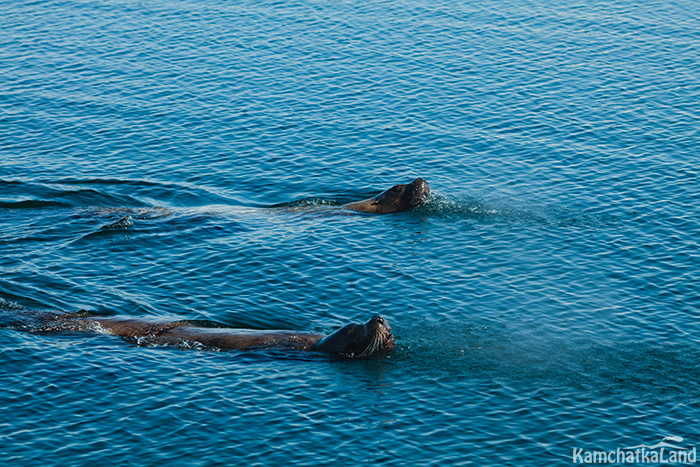
As one of the representatives of the marine world of Kamchatka, harbour seals are under close attention of scientists. The largest rookery of these animals is located on Bering Island on the Commander Islands.
Seals are much smaller than harbour seals, but they have the largest numbers among the pinniped family. There are two species of seals in Kamchatka: the Bering Sea seal and the Okhotsk seal. An interesting fact is that the cubs are quite independent and can survive without their mother, but their growth is slower when living alone and they remain dwarfs in their mature years.
Lahtak or otherwise sea hare is also present in Kamchatka. It is named for its fearfulness and characteristic jumping behaviour.
Larga is a light-coloured seal with dark grey spots. Its size is quite large for both females and males. The largest number of individuals can be found from Olyutorsky Bay to Navarin Bay, as well as in the Karaginsky Bay, Avachinsky Bay and Kronotsky Bay areas.
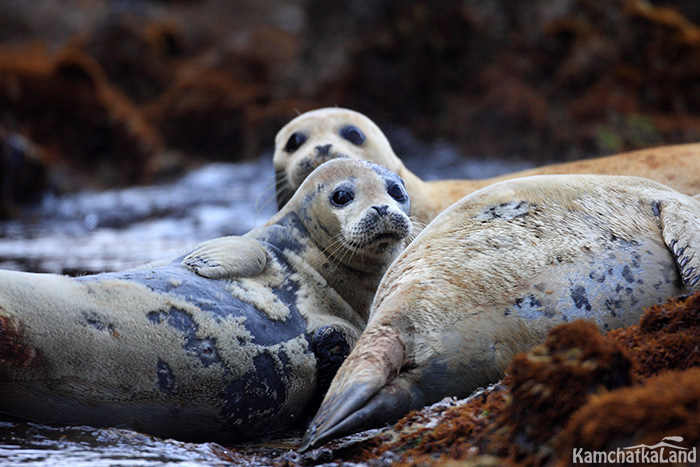
Antur is similar to the larga in appearance, but differs in habitat and breeding habitat. Its offspring moult while still in the womb. Listed in the Red Book. Often inhabits the eastern coast of Kamchatka and the Commander Islands.
Kalan is a sea otter or Kamchatka beaver that leads an aquatic lifestyle. These animals are very curious, quickly tame and trustworthy. They live mainly in the coastal zone. They do not have subcutaneous fat, and warm themselves at the expense of their fur. Fur is very valuable, one third of all time is spent on its care.
The most suggestive guests of marine Kamchatka are cetaceans. The grey whale, humpback whale, sperm whale, killer whales and others. Many representatives of this genus come here in summer to eat fish and crustaceans. Kamchatka is an excellent feeding ground for them. The main feeding areas are Kronotsky Reserve, South Kamchatka Reserve and the Commander Islands. In the latter, all cetaceans that enter the area are constantly monitored.
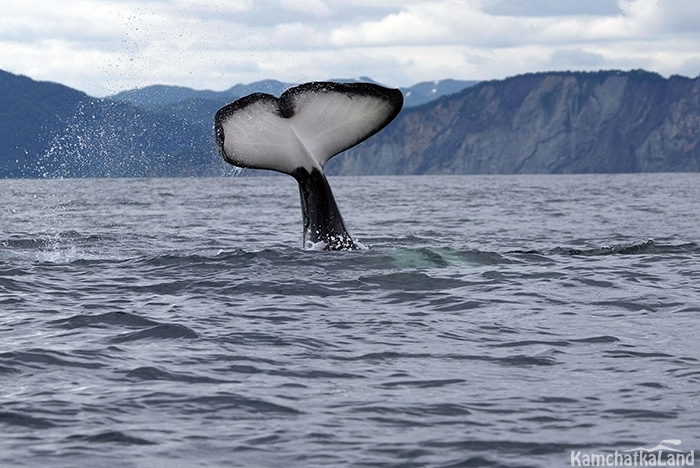
To book a tour or get advice about travelling to Kamchatka, write to us through this form. Manager Anastasia will reply to your enquiry shortly.
Анастасия

To book a tour or get advice about traveling to Kamchatka, write us through this form. Our manager Anastasia will reply to your request shortly.
Anastasia

To book a tour or get advice about traveling to Kamchatka, write us through this form. Our manager will reply to your request shortly.
Igor

The request was successfully completed, instructions are sent to your email